Got a pile of old NES carts? Want to play them on your HDMI television? Recently, a number of solutions for that have come onto the market — one for every budget. Here’s our take on three major HDMI NES players.
You need some sort of solution, because the Nintendo Entertainment System released in 1985 was about 20 years too early to have HDMI out. And even if your HDTV has composite A/V inputs, trying to play your NES through them will be a blurry, laggy mess and a half. You can buy an upscaling unit called a Framemeister, or install an HD mod into an old NES, but these are extremely expensive and technically challenging, respectively.
If you want an all-in-one solution for playing NES cartridges via HDMI, three different hardware makers have one for you today. Hyperkin, longtime producer of retro clone hardware, has the RetroN HD. RetroUSB, maker of homebrew games, has the AVS. And Analogue has its new Analogue NT Mini. But with each of these units having different feature sets, build quality and price, they’re likely to find quite different audiences.
I tested each of these systems out with a wide variety of NES cartridges, from common to obscure:
- Super Mario Bros. 2, surely in everyone’s library.
- Mike Tyson’s Punch-Out!!, same.
- Castlevania 3: Dracula’s Curse, which often doesn’t work with lesser-quality clone hardware.
- Super Mario Bros. 3, a cartridge for Famicom (the Japanese version of NES).
- Somari, a bootleg Famicom cartridge that is Sonic the Hedgehog starring Mario.
- Mission Cobra, an obscure unlicensed NES game.
- Honey Peach, an even more obscure unlicensed NES game of strip rock-paper-scissors.
- An Everdrive N8 flash cart that stores and plays back NES ROM files, filled with fan translations.
- A Famicom Disk System RAM adaptor plugged into a Magic Wild Card.
- The biggest curveball: Beauty and the Beast, a game only released in PAL territories that bugs out in my original NTSC NES because of the differences in television formats. (All three machines say they support PAL carts.)
In general, every system performed quite well, with only a few hiccups. Which is right for you? Let’s start with the least expensive.
RetroN HD
You might know Hyperkin from its RetroN 5 machine, a many-slotted monstrosity that could play NES, SNES, Genesis and Game Boy carts via Android emulation. RetroN HD is a much simpler pitch: It is a small box with NES stylings that plays NES carts. It comes with an NES-lookalike controller, and accepts original pads through its two ports. It is just $US40 ($53). It only ships within the US, but a mail forwarding service should take care of that.
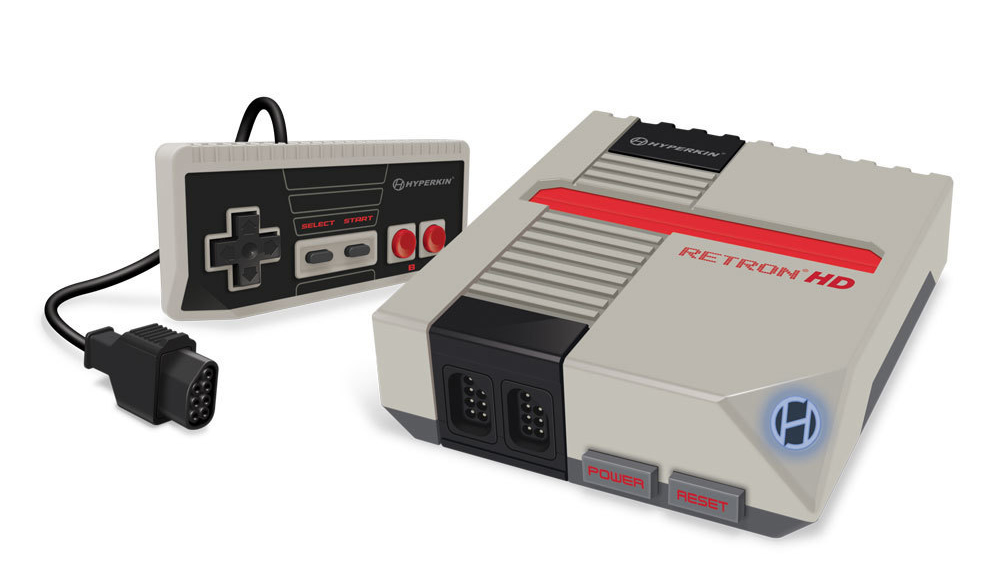
RetroN HD. Image: Hyperkin
The play experience is pretty solid for what you’re paying. It’s NES games! On your HDTV! But if you have something else to compare it to, you might notice that the experience is not quite accurate. The sounds don’t sound right, the colours are off.
In Punch-Out!!, Mario’s face is the same colour as the white shirt he wears while refereeing. (It should be peach-toned.) The whole thing also has a blurry filter on it, with a smudgy finish instead of sharp, square pixels. It doesn’t look bad, per se, but it does look wrong if you’ve seen better-quality displays.
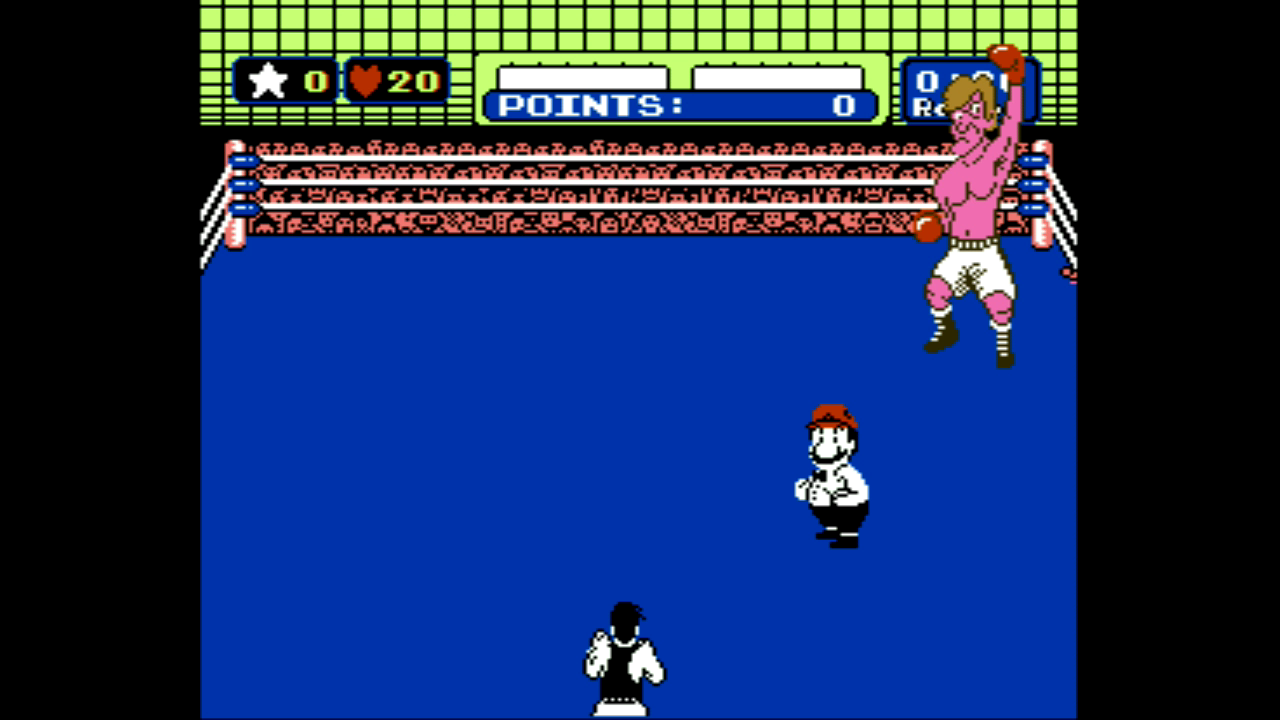
Mike Tyson’s Punch-Out!! on the RetroN HD.
That’s not to say there’s not a market for a RetroN HD. At just $US40 ($53), this is the only machine I tested that falls into the “impulse buy” category, and if you just have an old copy of Zelda sitting around that you think would be cool to play on your HDTV, RetroN will get the job done a lot better than trying to plug in your NES.
It passed most of the compatibility tests, playing licensed and unlicensed NES games with ease. It doesn’t have a Famicom cartridge slot, so I couldn’t test those. The only things it choked on were the Everdrive, which it refused to boot up, and the PAL copy of Beauty and the Beast — I flipped the PAL switch on the unit’s underside, but it didn’t make a difference.
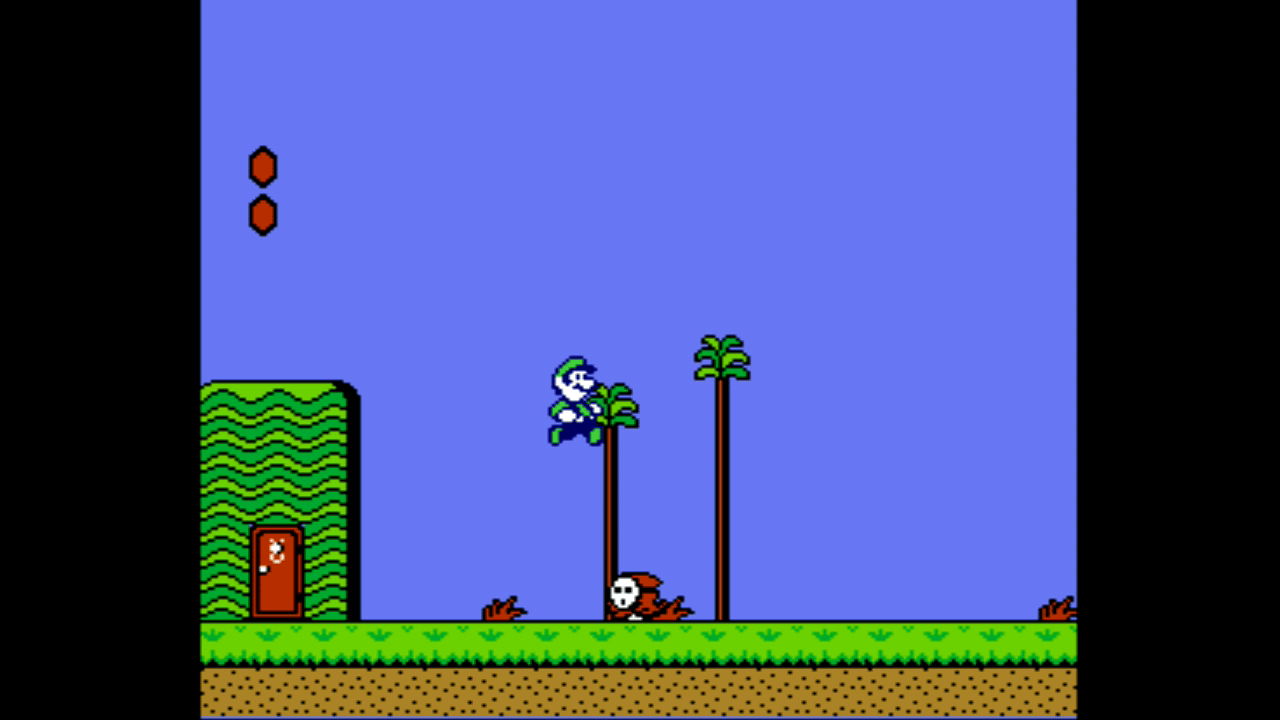
Super Mario Bros. 2 on the RetroN HD.
Another switch on the back of the RetroN lets you switch the game display between 16:9 and 4:3. And it should be noted that this does have composite out via standard A/V cables if you want to plug it into a CRT. For $US40 ($53), it’s a surprisingly complete package, including the box, the controller (which is not bad and has a cord of decent length), HDMI and composite cables, and a micro-USB power cable.
RetroN HD and a copy of Super Mario Bros. would be a great gift for a grown-up 80’s kid. But if you’re a real NES aficionado and want a better experience, you will have to drop more cash than this.
AVS
RetroUSB’s $US185 ($246) entry is a love letter to classic Nintendo design. Named after what Nintendo was originally going to call the NES, the AVS‘ angular, trapezoidal shape and lidded cartridge slot look like something out of a magazine feature of weird prototypes that never made it off the drawing board. Much like the RetroN, the Power and Reset buttons are modelled after the original NES, although these capture the tactile feel much better.
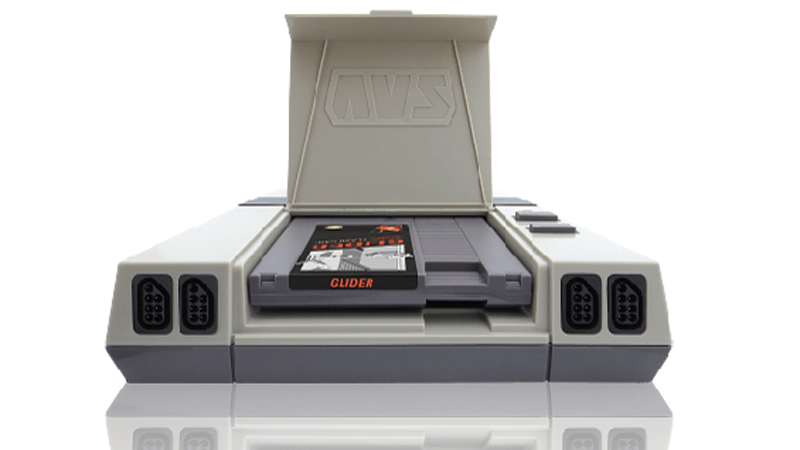
In short, it looks like something Nintendo might have made, and much like Nintendo’s actual console designs, it sometimes sacrifices function for form. You put the cartridges in sideways and close the lid on them. But it’s tough to line up the pins and jam them in there. I got a little scared when I was messing around with more expensive games.
Famicom games go into a separate vertical slot, into which you can jam a Famicom Disk System adaptor, even if you have to cram it in and pinch the cable at an awkward angle.
AVS has a few more inputs than the RetroN (or even the NES) — four controller ports instead of two, and a Famicom expansion port on the back that lets you use the third-party controllers for the Japanese system, if you have any lying around. It does not support any other video out except 720p HDMI.
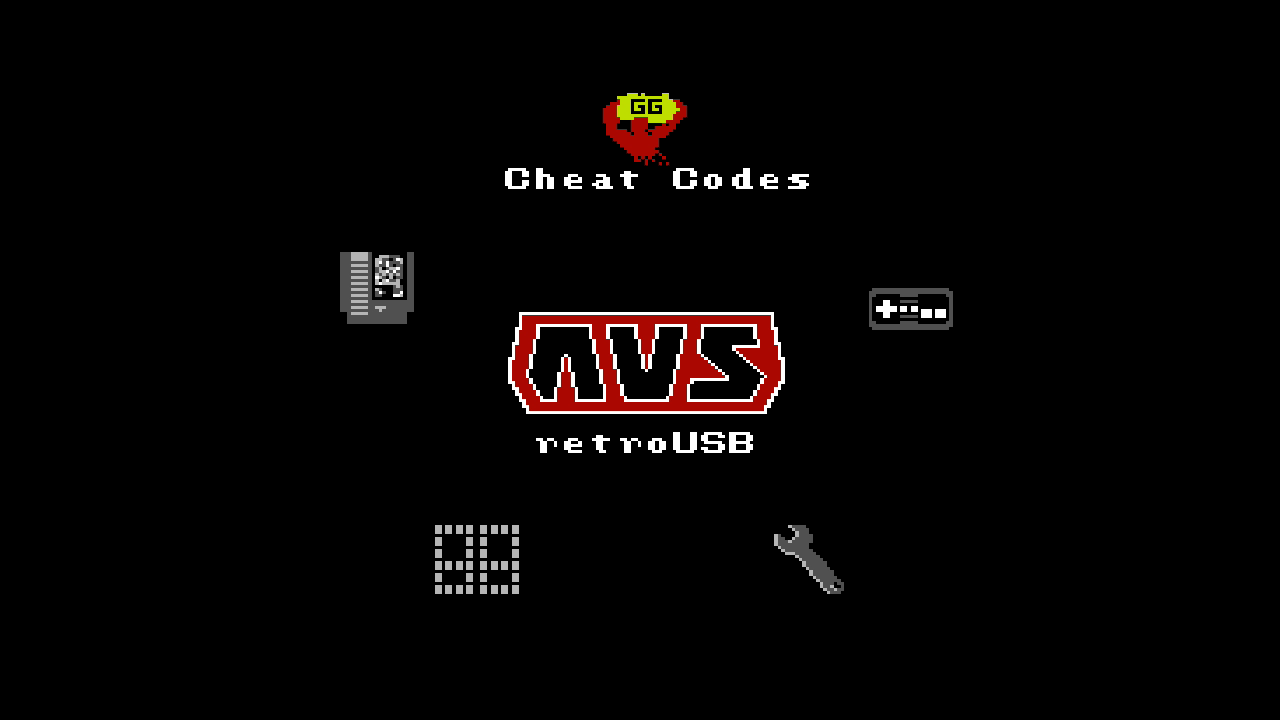
The AVS startup menu.
But it’s once you turn the AVS on that you get to the good stuff. Hitting that oh-so-authentic Power button launches you not into a game but into the system menu, which lets you play around with options. You can enter in Game Genie codes and give yourself some extra lives, skip levels, all that good stuff. The Input Options menu lets you assign button combinations that you can use during gameplay to reset to the menu and turn cheats on and off. Or turn “turbo” on for the A and/or B buttons. (No need for you, NES Advantage!)
It’s the Video options menu that really lets you cut loose. You can cut off the left-hand side of the screen image — some games, including Super Mario Bros. 3, used this area of the screen as a visual garbage dump, since CRTs would cut off the image. Since you can see it all in HD, AVS lets you hide it.
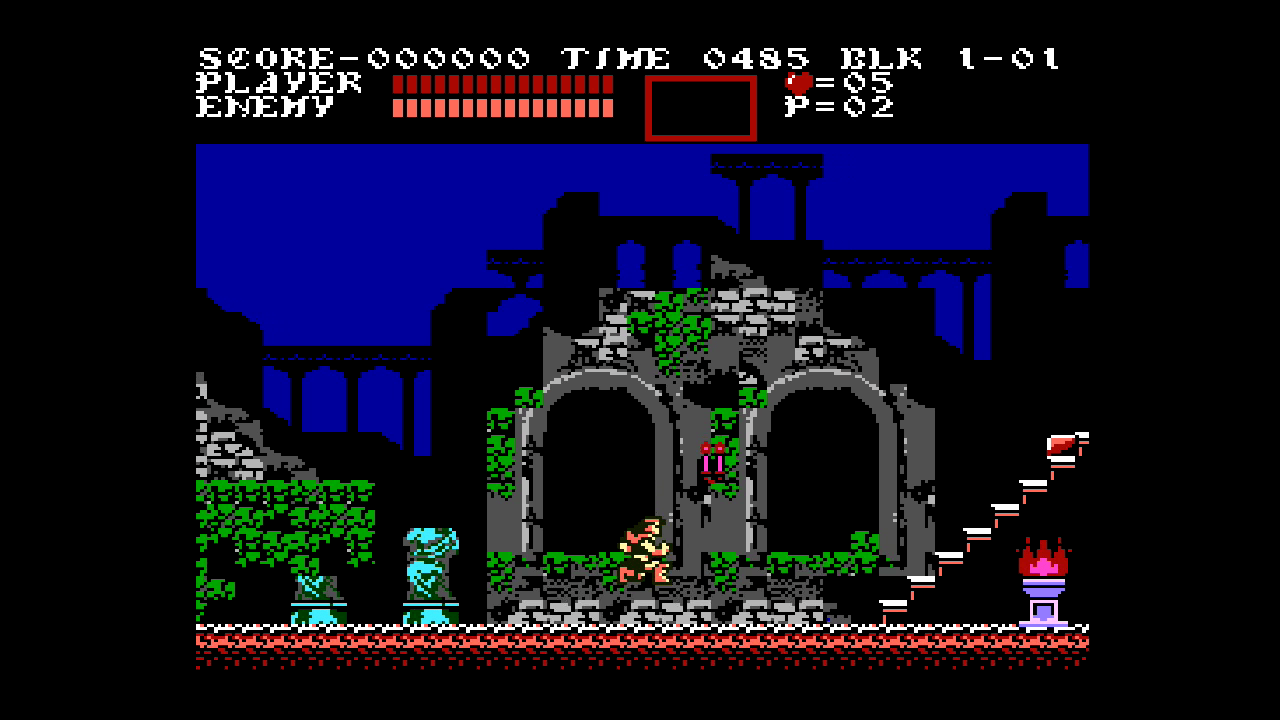
Castlevania 3: Dracula’s Curse on AVS.
You can also tweak the size of the pixels, add simulated scanlines of different widths to mimic the SD experience, or beef up the NES hardware by allowing it to display more sprites on any given line. (This can alter the way the games play by reducing the flickering, so it isn’t quite authentic any more.)
There’s an option to flip the AVS into PAL mode. I tried it with my French copy of La Belle et la Bête and… success! I was finally playing this PAL-only NES game without bugs. And it looks good. Everything looks good. A clean, crisp image with authentic sounds and gameplay. The FPGA technology inside AVS lets it perfectly replicate the NES hardware — but that’s what makes it cost $US185 ($246). For that price, you don’t get a controller, just an HDMI cable and a mini-USB power cord. You can use original NES pads.
The AVS passed all my compatibility checks, working with the NES games of different regions, Famicom games, Everdrive, the RAM adaptor — in short, everything I threw at it. This is a good choice for the player that demands perfection, but doesn’t quite need all of the super-niche bells and whistles of the top-of-the-line hardware. And speaking of which…
Analogue Mini NT
This should not be confused with the original Analogue NT, the $US500+ ($664+) device that actually used original chips harvested from busted Famicoms. Analogue Mini NT is its somewhat cheaper little brother, which like the AVS uses an FPGA board, but one housed in a block of solid aluminium. It’s heavy, sleek and elegant, where its competitors are plasticky and kitschy. It would not look out of place in any entertainment centre. It is also $US450 ($598). That’s more than a PS4 Pro!
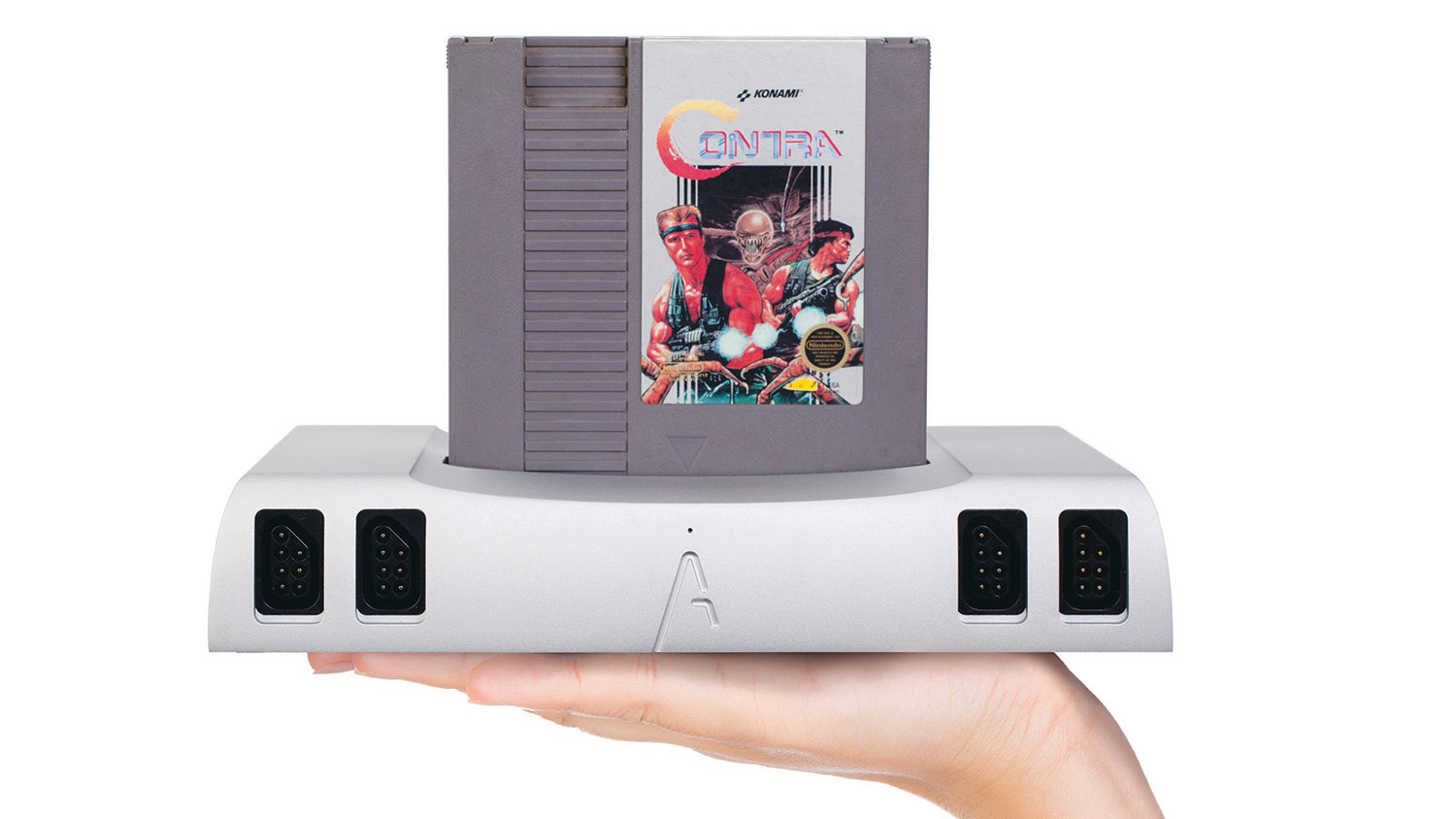
The Analogue Mini NT.
Much like the AVS, the audio and visual quality are impeccable. But at $US450 ($598), you have to be into the idea of having the ultimate, customisable, works-in-any-possible-situation, 1080p NES to want the Analogue Mini. And perhaps you are. You can see the difference just from the outside. While the RetroN and the AVS both focus on only the input and output options that make the most sense for the most people, the Analogue wants to cover everything.
So of course there are four controller ports and a Famicom expansion slot — but there’s also a microphone jack so you can play the Famicom games that required mic input. There’s an HDMI port — but there’s also a VGA port that lets you output composite, component, RGB and S-Video using standard cabling (not included).
The universal AC adaptor in the box has plugs for four different international outlet shapes. Also standard in the box is a wireless Bluetooth controller from 8Bitdo that looks like an NES pad but actually has a SNES button layout. (It even works with the Switch!) The Retro Receiver dongle that it communicates with plugs into a standard NES port, so you can use this wireless controller with anything. The Analogue Mini NT automatically recognises the controller, and maps the main buttons to Y and B instead of B and A.
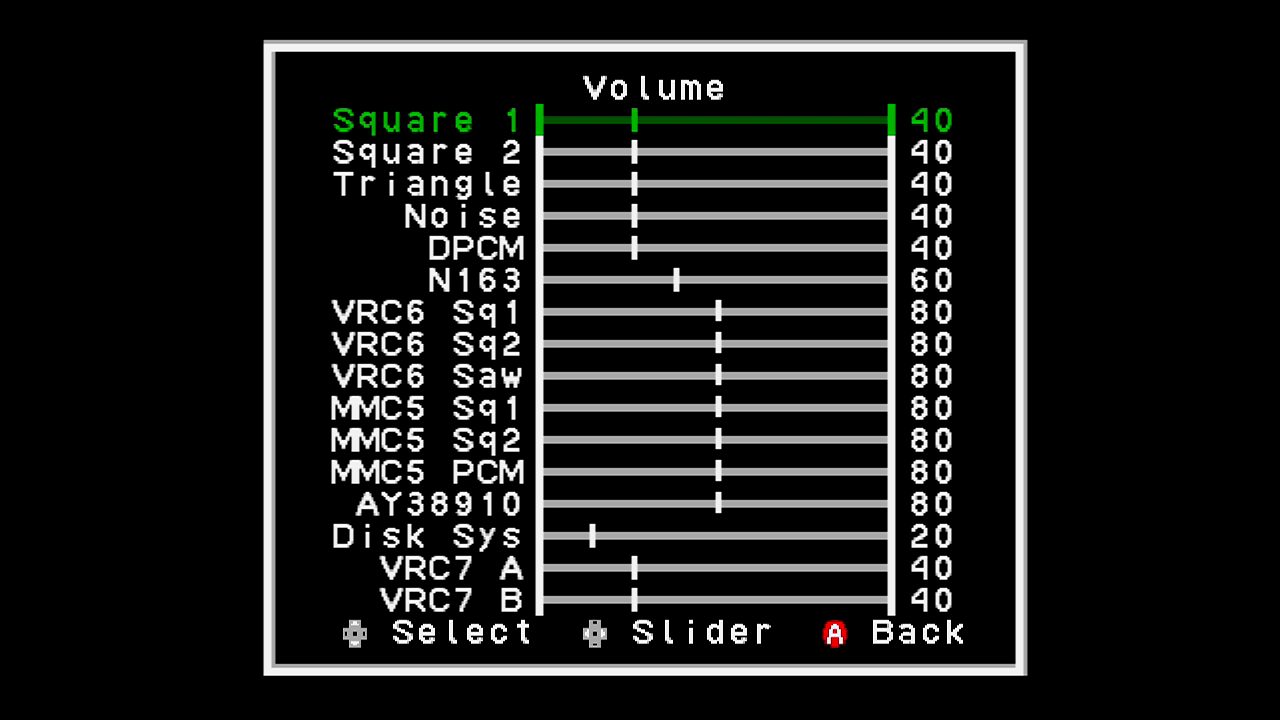
Just one of the Analogue Mini NT’s many, many adjustable option menus. This lets you tweak the individual volumes of all the NES sound channels.
If the AVS has a robust menu full of options, the Analogue has a panoply of choices and alterations. Remember how the AVS lets you chop off the left side of the screen? Analogue lets you adjust the cropping on all four sides, pixel by pixel. You can swap screen resolutions, add sprite scaling, customise scanlines with exacting specificity, choose different colour palettes. You can also bring up this menu overlay and adjust all of this stuff while a game is running.
You can adjust the individual volume levels of each of the NES sound waves, including all of the add-on chips that were sometimes included on later game cartridges. You can adjust the colour and pulsating light pattern of the tiny LED on the front of the console. And yes, you can enter Game Genie codes. Also, you can load an SD card up with .NSF files — NES soundtracks stripped out of ROM files — and DJ a whole set of perfectly accurate NES music, if you so desire.
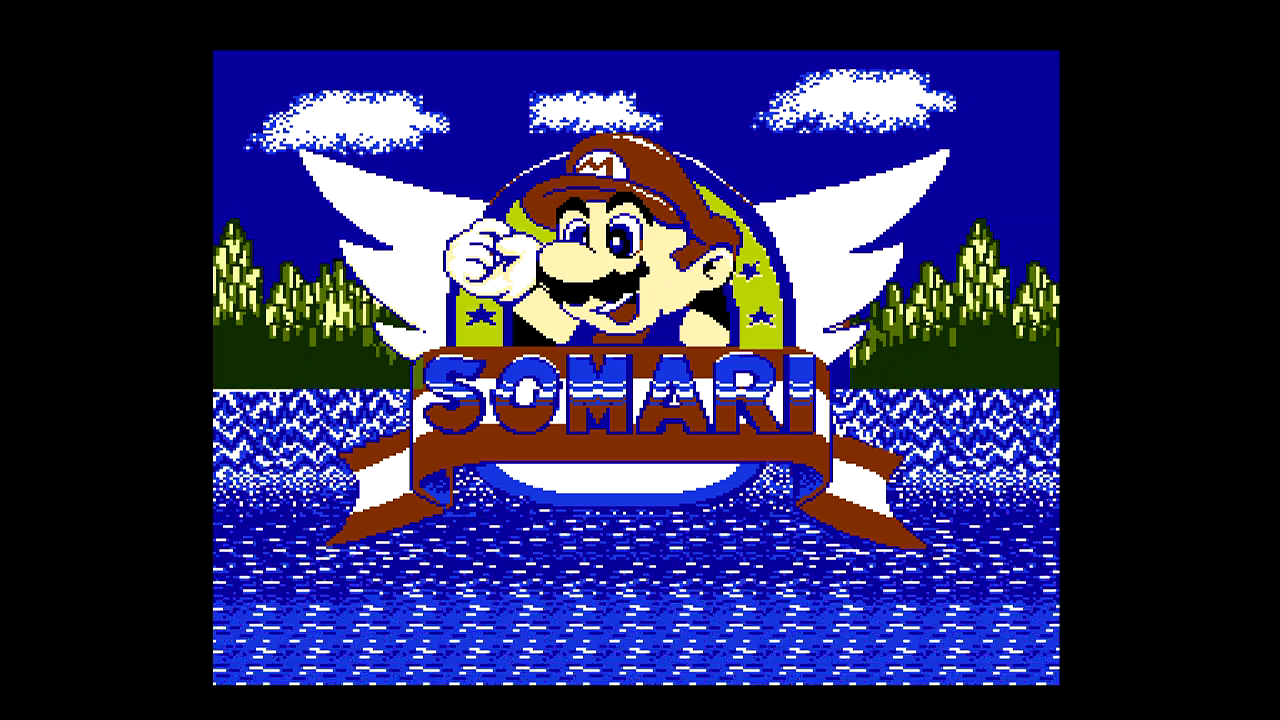
Somari on the Analogue Mini NT.
Complaints? Just a couple. The cartridge slots are incredibly finicky about a game being inserted perfectly and clean as a whistle. The other units weren’t as bad. I thought the Analogue was failing a lot of my compatibility tests until I realised I had to blow on — uh, I mean clean thoroughly with an officially licensed Nintendo Cleaning Kit — the cartridges, and then try reseating them in the slot.
Also, while the Retro Receiver slides gracefully into the Analogue’s controller ports, when I tried with an original NES pad, I really had to jam it in there with a lot of force. And finally, although the Analogue passed nearly all of my compatibility checks with NES and Famicom games alike, when I put it into PAL mode it still struggled with Beauty and the Beast, displaying glitchy graphics. Since both the AVS and Analogue can have their firmware updated, this might be rectified in the future.
These HDMI NES solutions are so wildly divergent in feature sets and pricing that I couldn’t possibly tell you which to buy. Which of these you want will surely be determined by your budget and your passion for perfection. Unless what you want is a NES Classic. Buddy, I can’t help you there.
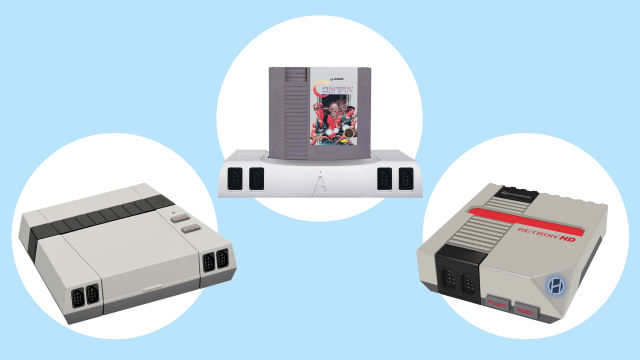
Comments